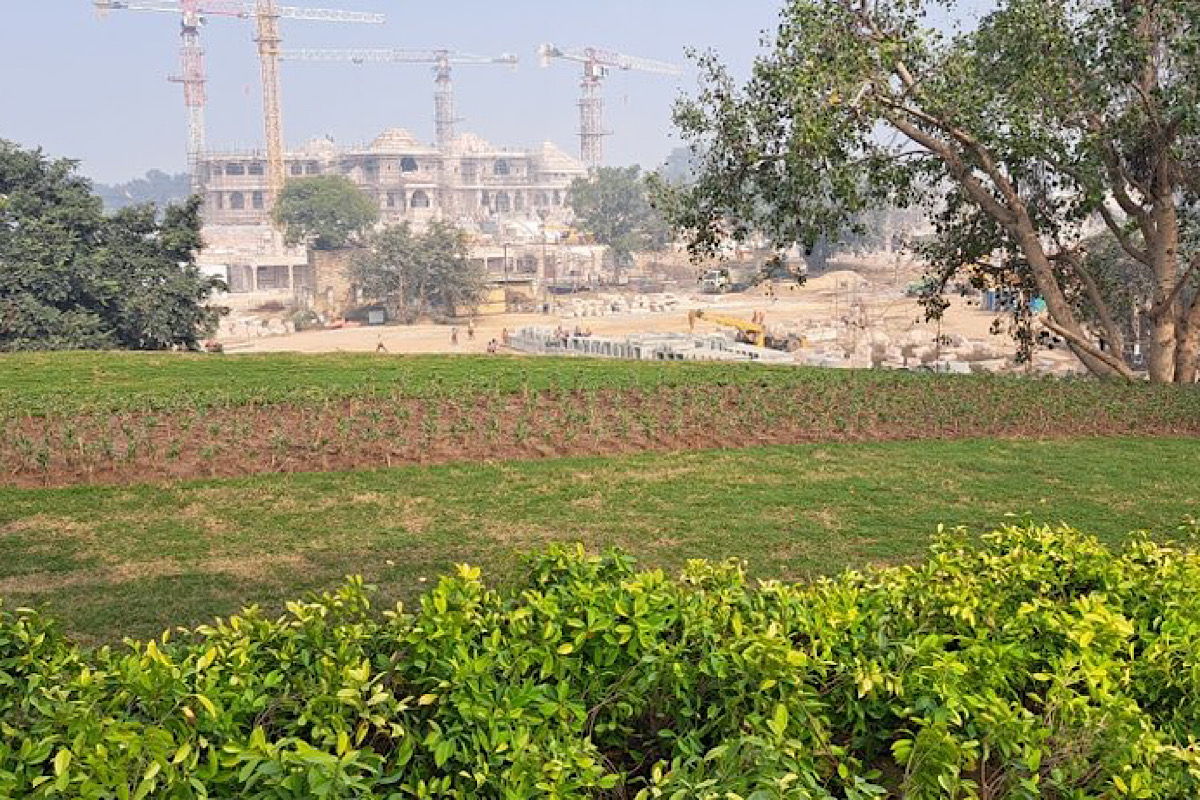Ayodhya witnesses surge of pilgrims on Mahashivratri
On the occasion of Mahashivaratri, a huge crowd thronged the Ram temple in this Uttar Pradesh district, putting the authorities on high alert.
On Thursday, the Trust, through social media, shared 20-point information about the grandeur of the temple from all areas of the temple complex to the sanctum sanctorum of Lord Ram.

Ram Mandir in Ayodhya, (photo SNS)
With barely 18 days left for the consecration ceremony of Ram Lalla in the newly-built grand temple on the Ramjanmabhoomi, Shri Ram Janmabhoomi Teerth Kshetra Trust has now enumerated the features of Ayodhya Ram Temple complex.
On Thursday, the Trust, through social media, shared 20-point information about the grandeur of the temple from all areas of the temple complex to the sanctum sanctorum of Lord Ram.
Advertisement
According to the Trust, the three-story temple is built in the traditional Naagar style. There is an idol of Shri Ram Lala in the main sanctum sanctorum while there will be Shri Ram Darbar on the first floor.
Advertisement
Shri Ram Janmabhoomi Teerth Kshetra Trust disclosed that the Ram temple would have five mandaps (halls). It will have dance, rang, sabha, prayer, and kirtan pavilions.
Sculptures of gods and goddesses adorn the pillars and walls of the temple. Devotees will be able to enter from Singhdwar by climbing 32 stairs. There will be a rectangular wall around the temple. The temple also has special facilities for handicapped and elderly pilgrims as there are also ramps and lifts.
The temple trust says there is a historical well (Sita Kupa) near the temple, which dates back to ancient times. In addition, a pilgrim facilitation centre (PFC) with a capacity of 25,000 people is being constructed. It will provide medical facilities and locker facilities for the pilgrims.
The main features of the Ram temple complex are:
·The temple is being constructed in the traditional Naagar style.
· The length (east to west) of the temple is 380 feet, the width is 250 feet, and the height is 161 feet.
· The temple is three-storeyed, and each floor is 20 feet high. It has a total of 392 pillars. There are 44 doors.
· The main sanctum sanctorum houses the childhood form of Lord Ram (idol of Shri Ram Lala), while the first floor will house the court of Shri Ram.
· There are five Mandap (halls) – Dance Mandap, Rang Mandap, Sabha Mandap, Prayer, and Kirtan Mandap.
· Sculptures of gods and goddesses are carved on the pillars and walls.
· Entrance to the Ram temple from the east side will be made by climbing 32 stairs from Singh Gate.
· There will be a provision for ramps and lifts for the convenience of disabled people and the elderly.
· There will be a rectangular wall around the temple. Its total length in all four directions is 732 meters, and the width is 14 feet.
· There will be four temples at the four corners of the Ram temple complex dedicated to Sun God, Goddess Bhagwati, Lord Ganesha, and Lord Shiva. There is a temple of Maa Annapurna in the northern arm and a temple of Hanuman ji in the southern arm.
· There is a historical well (Sita Kupa) near the temple, which dates back to ancient times.
· Other temples proposed in the Shri Ram Janmabhoomi temple complex will be dedicated to Maharishi Valmiki, Maharishi Vashishtha, Maharishi AgastyaMaharishi VishwamitraNishad Raj, Mata Shabari and the revered wife of Devi Ahilya
· The ancient temple of Lord Shiva, along with the installation of Jatayu on Kuber Tila in the southwestern part of the Ram temple complex, has been renovated.
· Iron has not been used anywhere in the temple.
· The foundation of the temple is constructed from a 14-meter thick layer of roller-compacted concrete (RCC), giving it the appearance of artificial rock.
· To protect the temple from ground moisture, a 21-foot-high platform has been constructed using granite.
· The temple complex has a sewage treatment plant, water treatment plant, water supply for fire protection, and an independent power station.
· A pilgrim facilitation centre (PFC) with a capacity of 25,000 people is being constructed. It will provide medical and locker facilities to the pilgrims.
· The complex will also have a separate block with a bathing area, washroom, wash basin, open taps, etc.
· The temple is being constructed using entirely traditional and indigenous technology of India with special emphasis on environment-water conservation, and 70 per cent of the 70-acre area has been kept green.
Advertisement